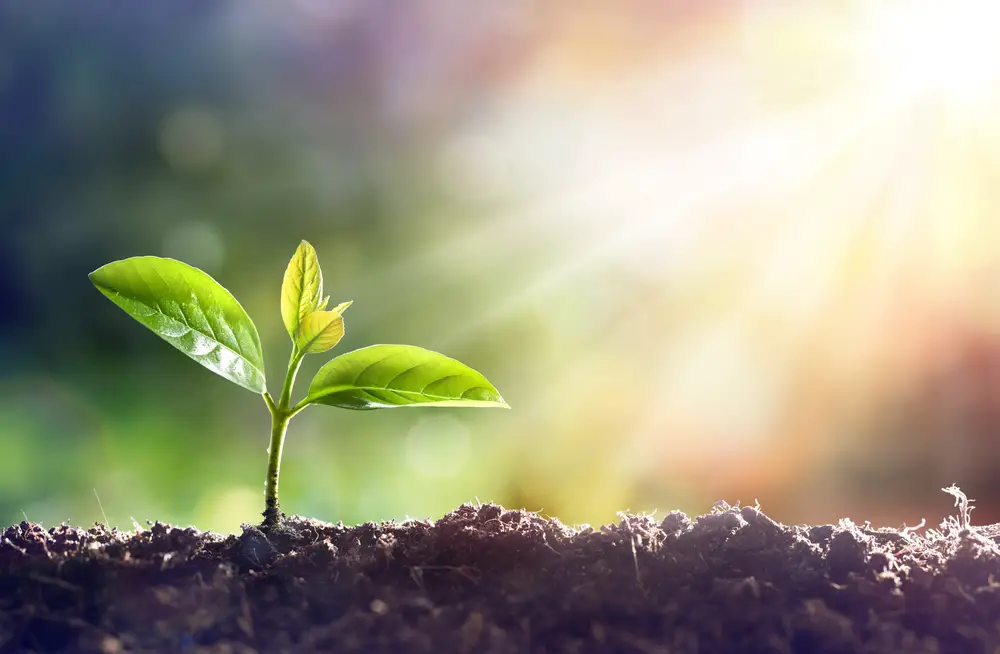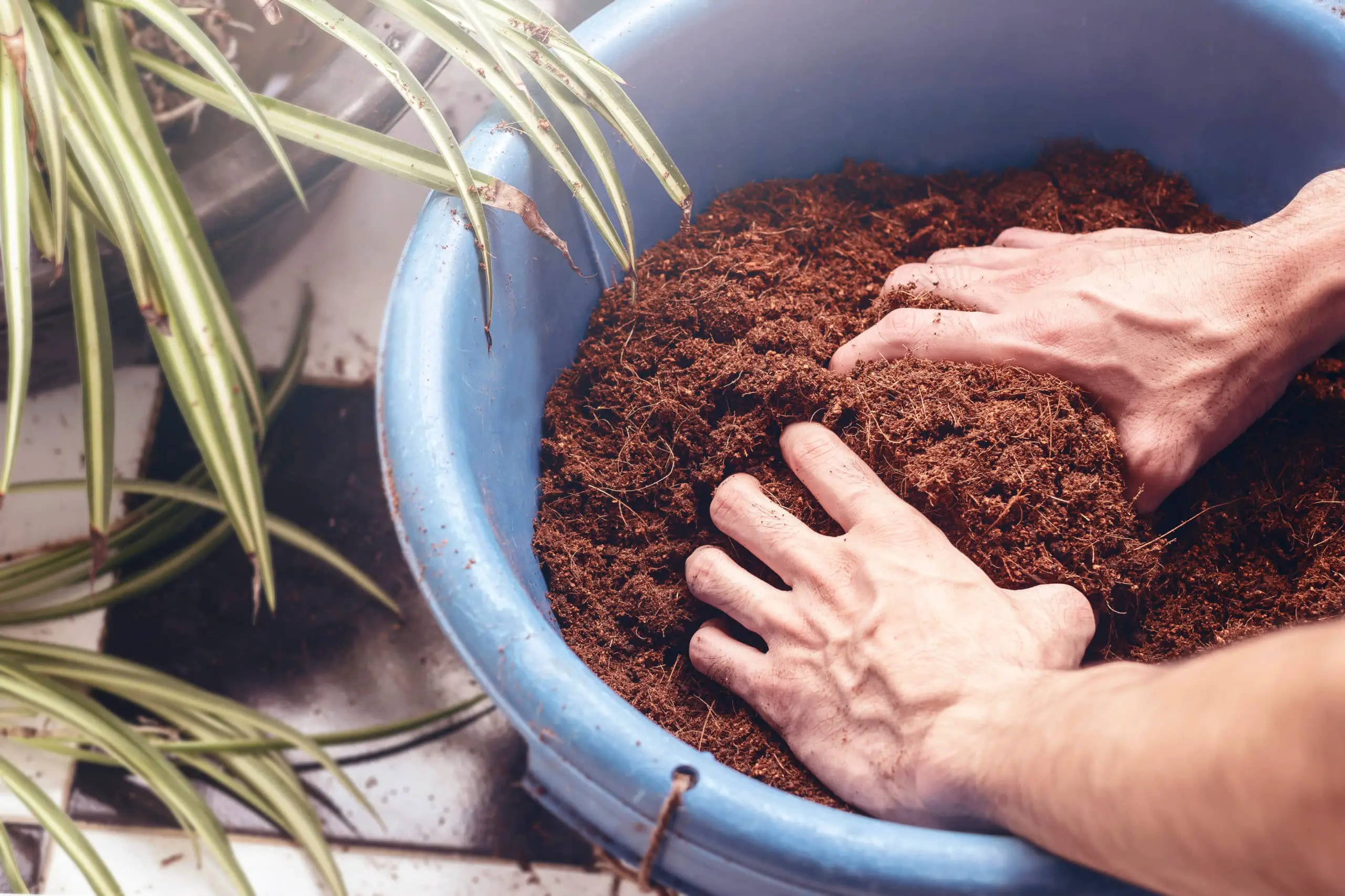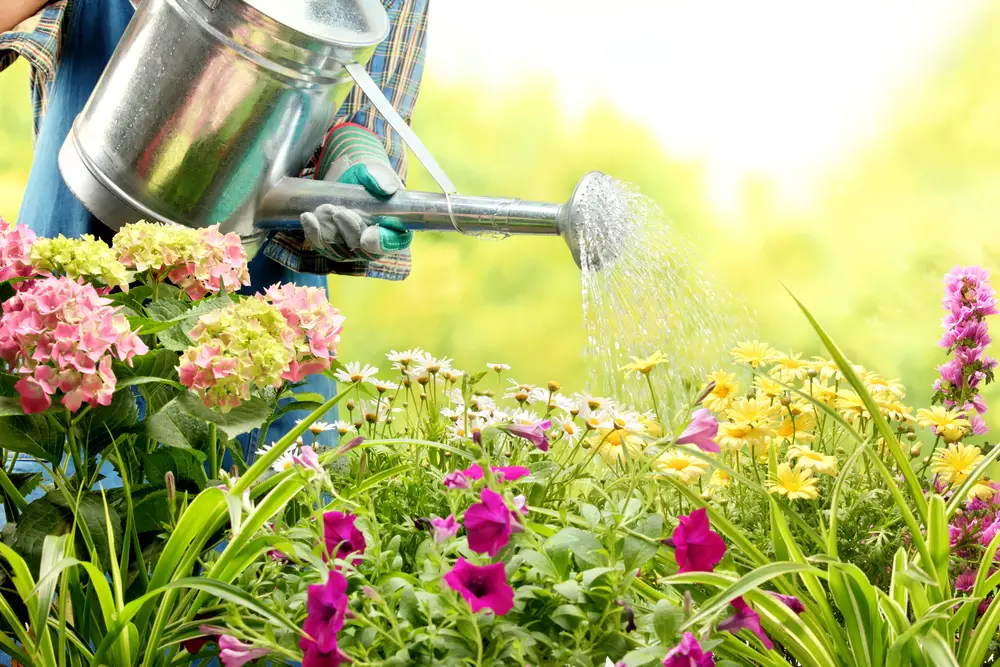Part of our existence in this world is our constant need for plants. Plants provide us with some of the necessary nutrients we need to survive. They are everywhere, and we can’t live without them.
The five things plants need to grow are Light, Water, Temperature, Soil, and Air.
This article explains the above in detail.
Five Important Things That Plants Need To Grow
Essentially, the five things that plants need to grow: light, water, temperature, soil, and air, are not in order of importance because they are all equally essential.
What’s important is they should be present to grow a plant effectively.
1. Light

Light is vital for plant growth because it makes photosynthesis possible. Photosynthesis is the process of converting carbon dioxide into organic compounds through the help of light.
Thus, photosynthesis will not occur without sunlight, which means all plants would be lifeless.
The plants absorb light through the help of chlorophyll, a natural substance that makes the green life of plants.
It directly affects the growth of plants because it helps the plants produce flowers and bloom.
Light acts as the food of every plant to flourish. The energy from sunlight enables plants to generate food and overall growth.
They will then release oxygen into the atmosphere, helping other life forms to survive in this world.
Moreover, light is essential to the point that artificial lighting is used to supplement the lighting needs of plants.
When there is not enough light hitting the plants, artificial lighting is used to mimic the natural light.
However, artificial lighting can never duplicate the natural sunlight’s intensity and nutrients.
2. Water
The next element a plant needs to grow is water. In fact, humans and animals need water to grow as well. But how does water affect plant growth?
There are three situations in which water affects plants. First, when water is too much. Second, when water is low. Third, when water is enough.
When there is too much water in a plant, it will result in root rot and the plants will no longer absorb oxygen from the soil leading to death.
When there is not enough water, the plant will not get enough nutrients from the water, affecting the plant’s growth. When the water is enough, the roots will have healthy roots and the plants can have effective growth.
However, all plants have different watering needs thus what is too much for a certain plant may not be enough for others. Hence, it is important to do a background check if you plan to grow a certain plant.
Every plant should meet its watering needs because water helps transport the nutrients from the soil to enter the plant’s system. Without water, the plant will droop and cannot support its weight.
The water enters the plant through the root system and then flows to the stems and nerves of the plant. The plants have xylem vessels that are responsible for allowing water to travel throughout their system.
When the water evaporates from the surface area, it helps maintain a proper temperature which is also an element that plants need to grow.
3. Temperature
Another important element that a plant needs to grow is temperature. The weather condition highly affects the growth of plants in many ways. We can easily tell when frost or extreme heat conditions kill the plants.
Along with sunlight, the temperature does have effects on photosynthesis as well. Not just that, they also have outstanding contributions to the respiration of plants.
That is because when temperatures are right that means there is enough sunlight and if temperatures are low that means more moisture is present.
Similar to water, plants have a specific taste of temperature to grow. This varies to every plant hence there is no one size fits all in the case of temperature. Yet, extreme temperature conditions are no longer beneficial for plants.
Moreover, temperature also affects the germination process of plants. Germination is the process of slowly developing the roots and leaves of the seeds.
When the temperature reaches a certain level, germination will take effect.
Again, different plants have different temperature requirements. This is why knowing the hardiness zones of plants is important to see if it’s suitable to grow in your area.
But remember, you cannot control the weather so there’s no guarantee that the best temperature is permanent.
4. Soil

The next important element a plant needs to grow in soil. Soil has a much beneficial influence on plants. These include nutrients, oxygen, and anchorage among many other things.
Without soil, the plant could not stand and extend its roots for stabilization. Plants need soil to stabilize themselves and produce the food that they need.
Soil, in other words, paves the way for other elements to become part of a plant’s growth.
Moreover, the soil is also responsible for providing oxygen to the plants. There are spaces in the soil particles that contain air providing oxygen to the plants.
Plants also use these spaces to break down sugar and release the energy they needed to survive.
Aside from that, soil also helps the plant retain moisture to the roots.
The water from the soil will evaporate cooling the plants carrying essential nutrients that prevent plants from wilting. Soil is also a primary material for photosynthesis.
Furthermore, soil also modifies the temperature by insulating the roots protecting them from drastic temperature fluctuations.
This is seen whenever the temperature is high, the moisture in the water will help cool the plants. When the temperature is low, the heat from the soil will help balance everything so the plants can survive.
Most importantly, soil carries some of the essential nutrients the plants need to grow. They also help carry the nutrients from the fertilizers we add to the plants.
These are just a few of the things that soil does to plants.
5. Air
The last important element the plant need to grow is air. The main reason why plants need air is for photosynthesis and breathing.
Yes, plants need fresh air just like we do in order to convert food.
There are two situations wherein a plant absorbs air: through the soil and above the soil. Plants absorb air from the atmosphere just like we do and they are also affected if the air is not fresh.
Sometimes, the air they absorb is low on oxygen while rich in other gases that are harmful to them.
On the other hand, the plants also absorb air through the soil using the help of small spaces in the soil particles.
This is what helps the root to survive and spread outward. When the roots are healthy underneath, they will reflect outside.
Interestingly, soil and air should also work hand in hand. When the soil is dense, there will be no space for the air to flow which is bad for the plants.
It will cause root failure and you will only notice it after you dig the plant out of the soil.
This is why it is important to have good soil for the plants. Not only will it provide stability for the plants but also helps with air and moisture retention.
But they must be perfectly balanced otherwise it will disrupt the growth of the plants.
Other Things Plants Need To Grow
Apart from the five essential things that plants need to grow, other things can help them maximize their growth. These are:
Growing pots are important in areas where the natural soil is not suitable for growing plants. They are also ideal for indoor plants. You can mix your soil to match the needs of your plants and put it in a growing pot.
Space
Space is the location where you put your plants. Plants need their personal space to grow. However, you need to match it with their needs because some plants love sunlight while others don’t.
Fertilizers
Fertilizers have become part of every farming story. They provide all the important nutrients the plant needs. When the plant is not getting enough nutrients, fertilizers will help save the day.
Final Thoughts on Five Important Things That Plants Need To Grow
Now when you look out at your garden, you’ll know that your plants have the same needs but in varying degrees, and that makes more sense.
They’re no longer just plants, but individuals with different natures.
Edited By
Patricia Godwin

